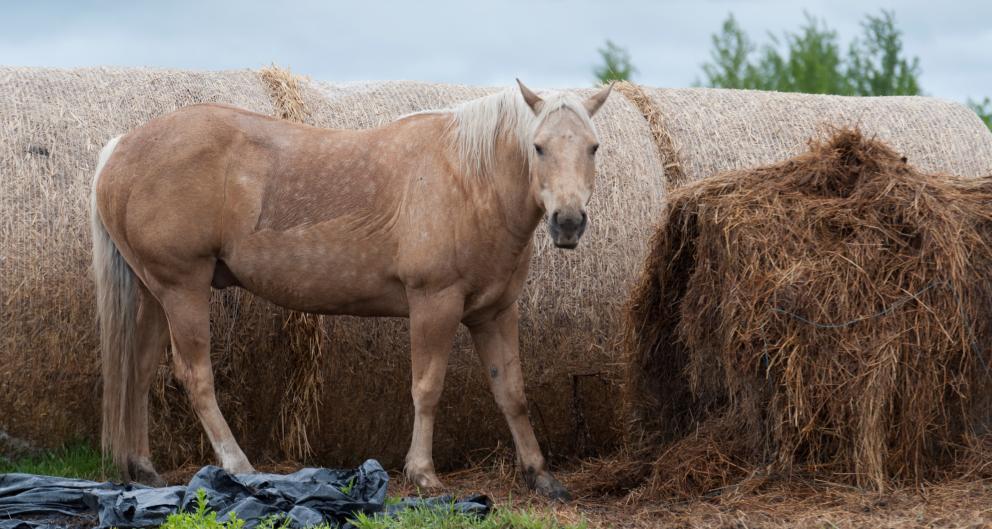You are here
Dr. Ann Britton - Strangles Disease – What Every Horse Owner Should Know

Article by Dr. Ann Britton, Animal Health Centre, BC Ministry of Agriculture, Abbotsford, BC
Strangles is a bacterial disease of horses caused by the bacterium Streptococcus equi subspecies equi (which we will call from here on See). This bacterium is NOT a normal inhabitant of the upper respiratory tract of horses and acts as a primary pathogen. As a primary pathogen, See does not need a predisposing viral infection, tissue damage or immune suppression to cause the disease, Strangles. Infection with the bacterium See alone can cause Strangles in susceptible, exposed horses.
See is highly contagious and horses become infected by inhalation or ingestion of infected material directly from oral and nasal secretions as well as draining lymph nodes of infected horses. They can also be exposed by contact with infected barn surfaces, tack, equipment, grooming tools, horse blankets, etc. Humans can transmit the bacteria from affected to unaffected horses on hands and clothing. Disinfectants such as povidone-iodine and chlorhexidine are effective if used according to directions.
Outbreaks of Strangles can occur as a result of introduction of either a symptomatic horse or an asymptomatic carrier horse. The carrier horse may be either in the recovery stage of the disease and still shedding bacteria or a chronic carrier of See. While recovering horses may shed the bacterium for up to several weeks following recovery, chronic carriers are reported to maintain See in the guttural pouch and/or paranasal sinuses for up to 3 years.
Generally, horses 1 to 5 years of age are affected but horses of any age can contract the disease. Morbidity (clinically sick horses) can approach 100% in exposed, susceptible horses but mortality (dead horses) is low. Strangles causes fever, malaise, nasal discharge and in some cases a cough. The hallmark clinical sign of Strangles is enlargement of lymph nodes under the jaw and around the throat which become abscessed, rupture and drain.
Once a clinical case is suspected, owners are advised to put the horse under quarantine and to take appropriate biosecurity measures to prevent spread of the infection to barn mates. A veterinarian should be called immediately to examine the horse and run tests to confirm the suspicion of Strangles. Upon confirmation, quarantine of the entire facility is recommended to prevent spread of the bacterium off the premises to other barns or show arenas until affected horses recover from the disease. Biosecurity measures to protect unaffected horses during quarantine include performing twice daily monitoring of rectal temperatures to identify new cases, isolating any horse which develops a fever, refraining from sharing tack or equipment, disinfecting water buckets daily and practicing of strict hygiene between horses, including gloves and protective clothing.
Three negative culture tests taken at weekly intervals following recovery are recommended to ensure that the affected horses have become free of infection. To prevent bringing See into a barn, every new horse should be isolated for three weeks prior to introducing them to the rest of the population. Some barns may require a negative culture test from any prospective addition prior to arrival. A vaccine is available for Strangles in consultation with the horse owner’s veterinarian.
Horse owners armed with in depth practical knowledge of Strangles can be highly successful in preventing the disease and protecting the health of their horses.
